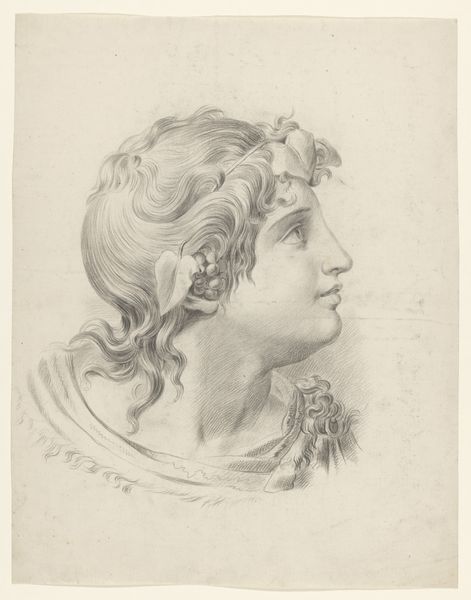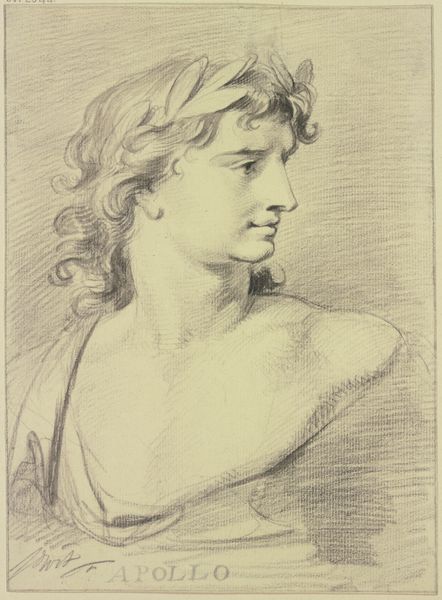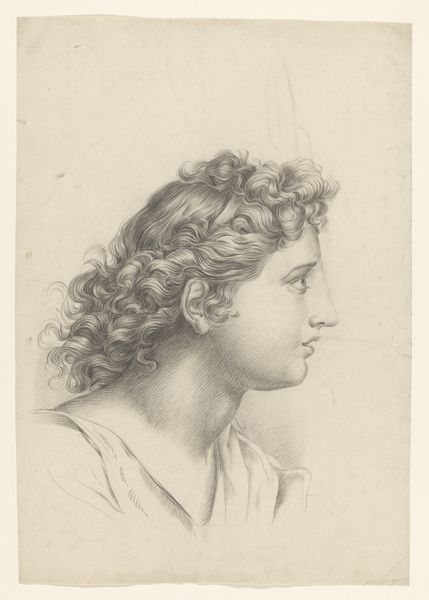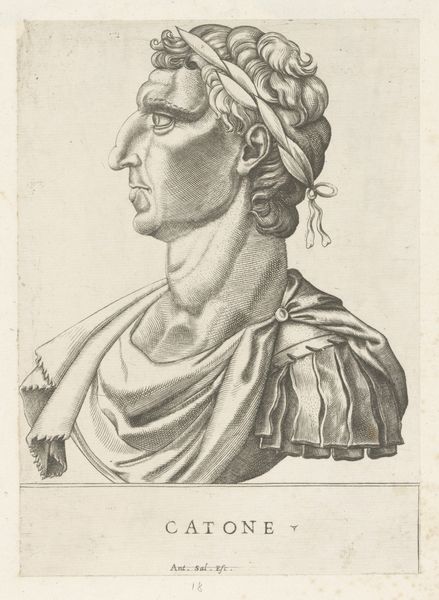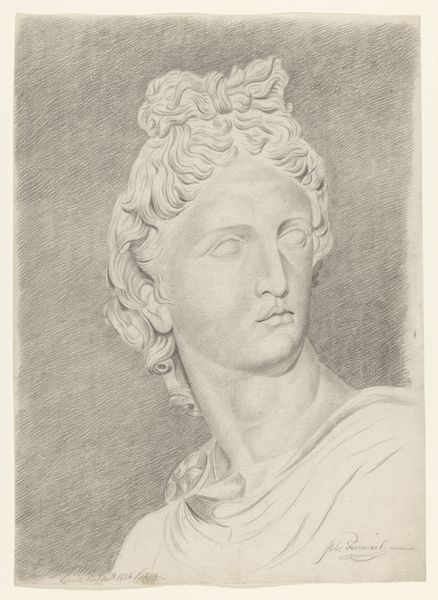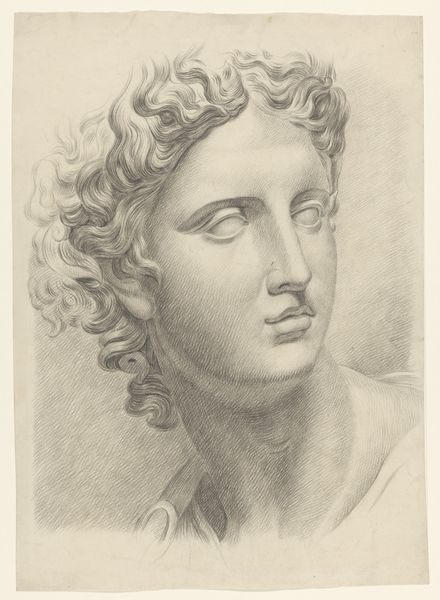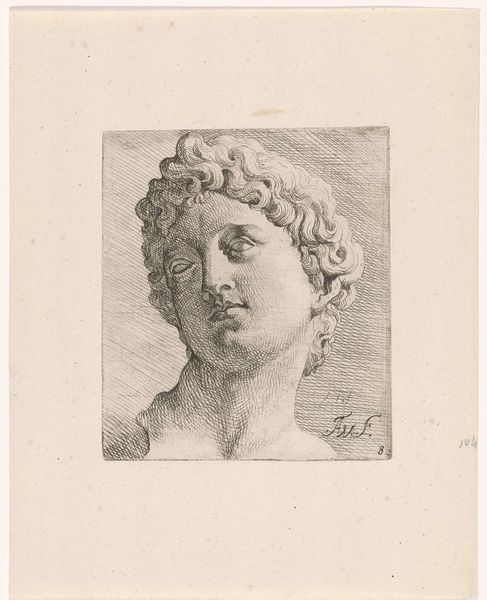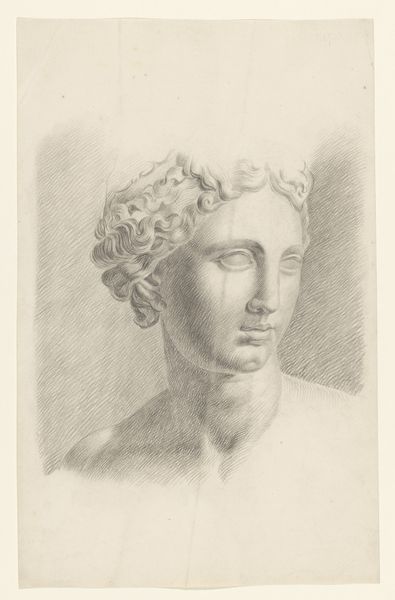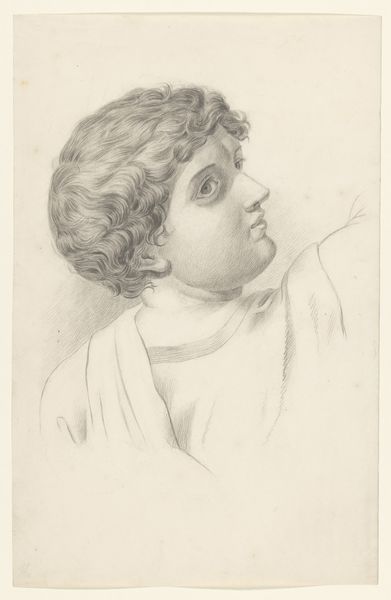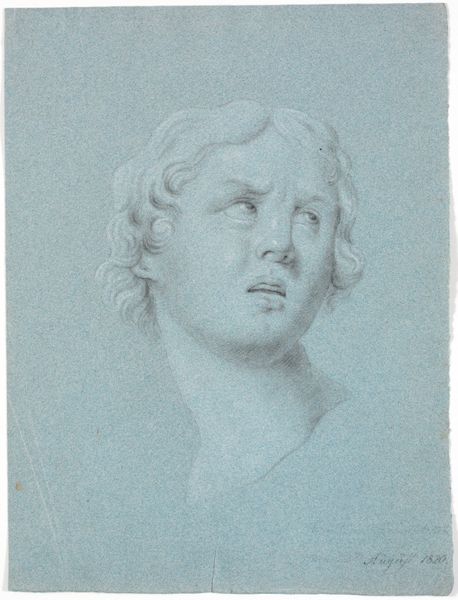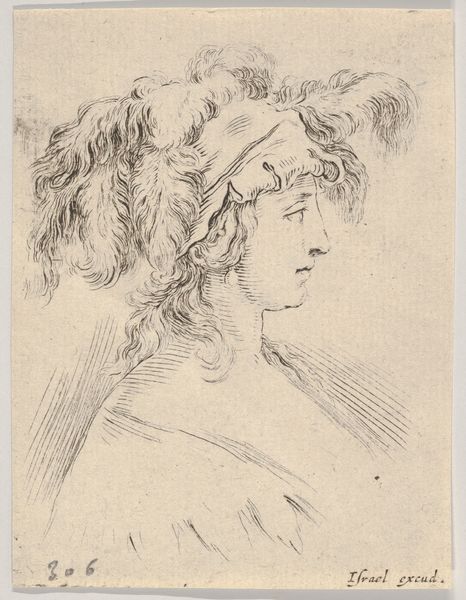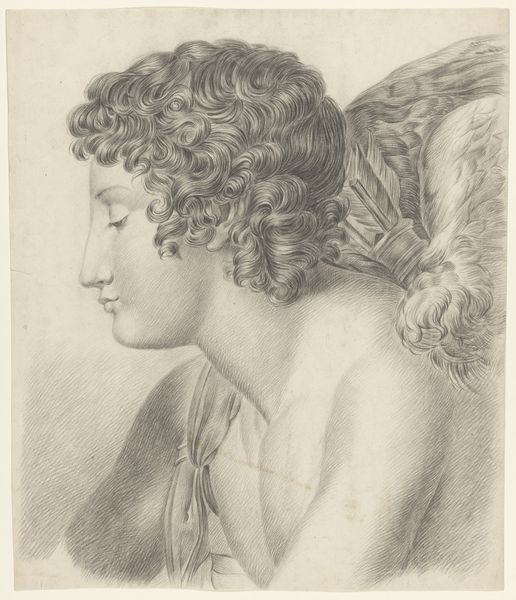
drawing, pencil, graphite
#
portrait
#
drawing
#
pencil drawing
#
pencil
#
graphite
#
portrait drawing
#
academic-art
#
realism
Dimensions: height 475 mm, width 332 mm
Copyright: Rijks Museum: Open Domain
Editor: Here we have Johannes Tavenraat’s "Head of a Boy with Cap, Facing Right," created sometime between 1819 and 1881. It’s a graphite and pencil drawing. I'm really struck by how classical it feels, almost like a study for a sculpture. What can you tell me about this piece? Curator: This drawing places itself within a fascinating moment in art education. The Rijksmuseum would likely have used these drawings as instructional aids. Tavenraat's "Head of a Boy" reflects the intense focus on mastering classical forms that characterized academic art of the 19th century. The piece embodies the institutional drive to instill classical ideals. Editor: So, the artist isn't necessarily making a statement, but fulfilling an educational need? Curator: Partly. Consider how the Realism movement was developing alongside Academic Art. Artists grappled with balancing the accurate depiction of the world with the aesthetic values promoted by institutions. Are the fine lines a nod to a kind of established practice? What statement might that make, and why? Editor: I hadn't considered that. It seems he's participating in the visual rhetoric of the time. It feels like he’s using the tradition to maybe offer social commentary in its own way. Curator: Exactly! The role of art extended beyond mere aesthetics. Images were tools, whether to enforce cultural norms or challenge them. Tavenraat, by choosing to depict even this simple study, enters into a visual conversation that reflected societal values and expectations. Editor: That's given me a whole new way to look at these older academic works. Thanks for shedding light on the context of it all. Curator: And thank you! Reflecting on how images operated within social structures certainly enriches our appreciation.
Comments
No comments
Be the first to comment and join the conversation on the ultimate creative platform.
